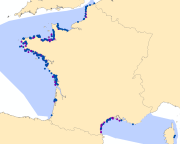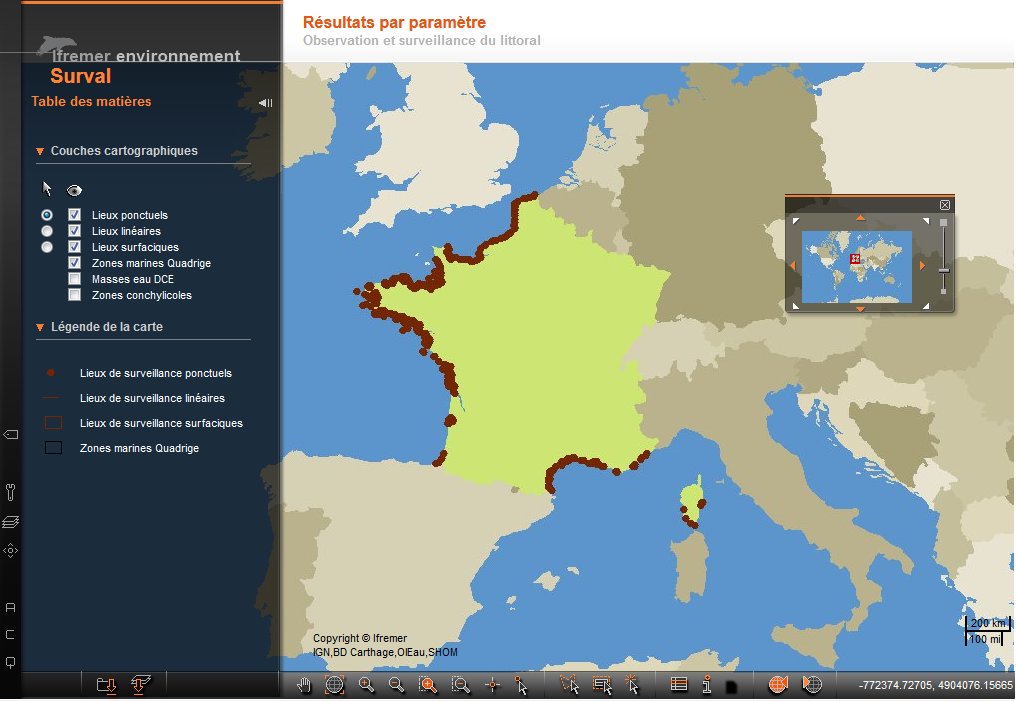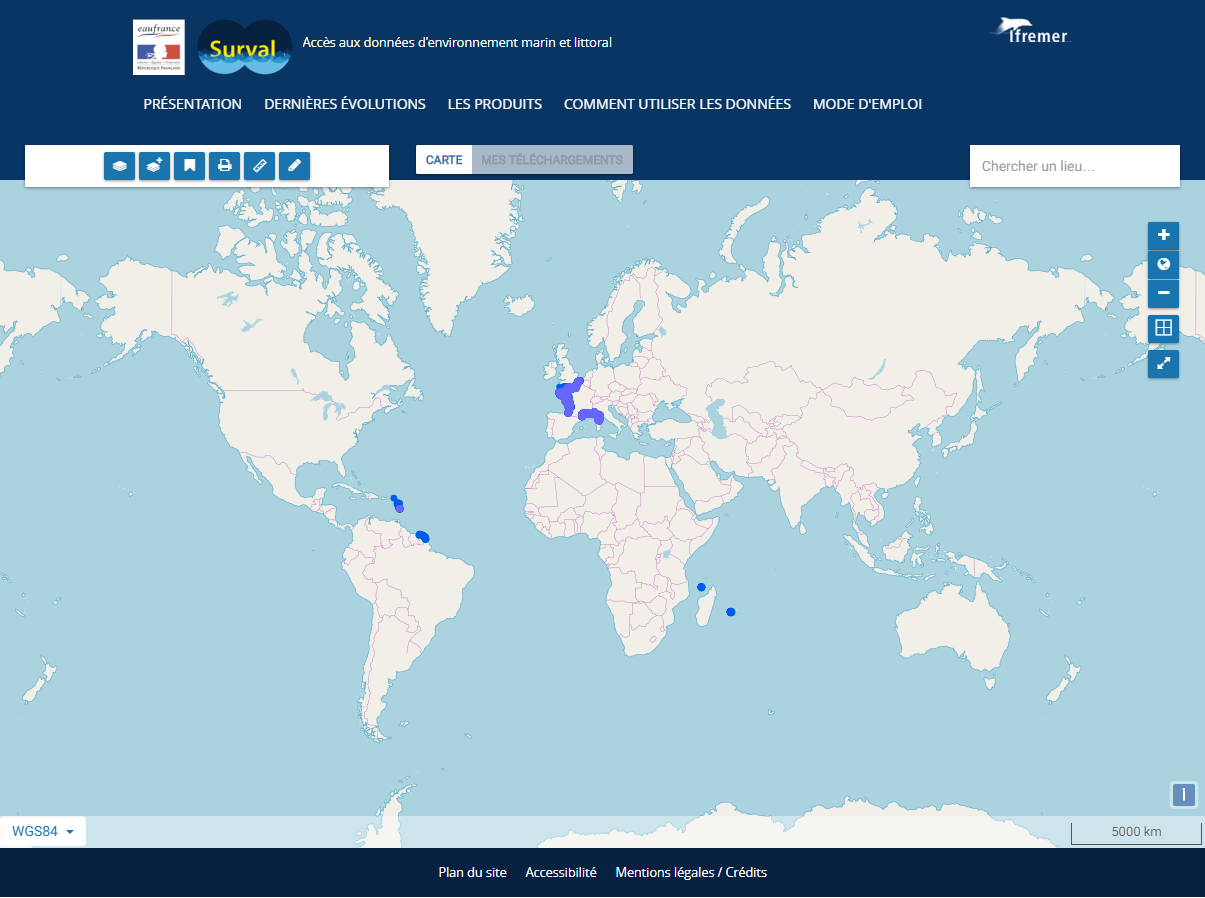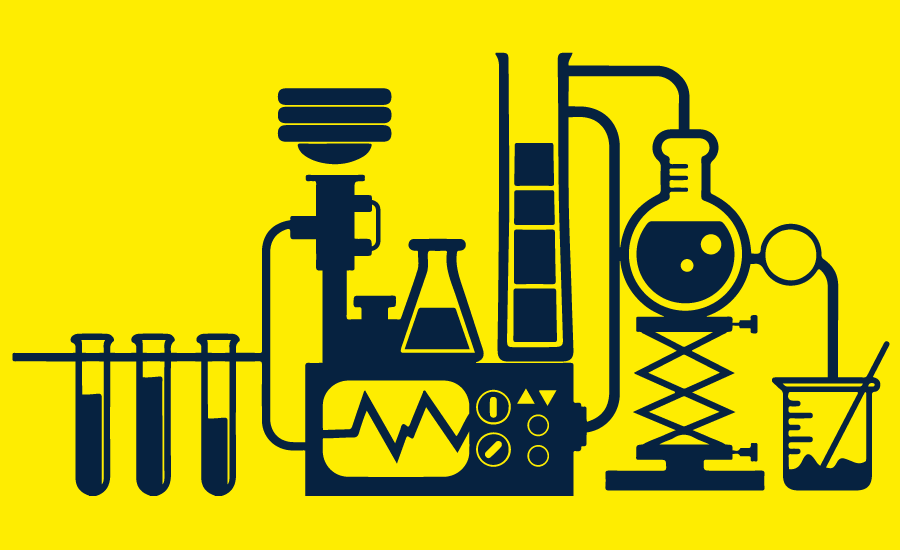surveillance sanitaire
Type of resources
Available actions
INSPIRE themes
Provided by
Years
Representation types
Update frequencies
status
Scale
-

Lieux de surveillance du programme REMI (Réseau de contrôle microbiologique des zones de production de coquillages) pour l'année déterminée figurant dans le document de prescription "surveillance microbioloque"-inventaire cartographique des points de prélèvement REMI et des listes de zones classées et surveillées-1er février de l'année déterminée. Données issues de la base de données Quadrige².
-

Volet de réseau national REMI (Réseau de Contrôle Microbiologique), anciennement REMIC jusqu'en avril 2011. Ces données concernent la surveillance microbiologique régulière des zones de production conchylicoles afin de vérifier que le niveau de contamination, sur la base du dénombrement des Escherichia coli, reste conforme au classement (A, B et C) défini dans les arrêtés préfectoraux.
-

Since 2008, the Coastal Chemical Contamination Observation Network (ROCCH) has taken over from RNO (French National Observation Network for Quality in Marine Environments), which had existed since 1974. ROCCH aims to meet national, community and international obligations relating to monitoring chemicals in marine environments. It is therefore more of a control network than a heritage network as RNO once was. The backbone of ROCCH is to apply the European Water Framework Directive (WFD) and to meet the obligations set out in OSPAR Conventions and in Barcelona. As the WFD insisted on decentralization, ROCCH has gone from having just one project leader (the Ministry for the Environment) to having many decision-makers (water agencies, DIREN etc.). Chemical analyses are no longer conducted by Ifremer alone, but are attributed to other partners following calls for tender. ROCC also includes the monitoring of chemicals in shellfish production areas for the Food safety agency (DGAL) and the Ministry for Agriculture and Fisheries. Monitoring focuses on the three regulated metals: mercury, lead and cadmium in the given areas. Monitoring of these chemical contaminants is conducted in the three marine matrices: water, biota and sediment. Testing also includes imposex, the biological effect of tributyltin (TBT), as required by the OSPAR convention.
-

The French national network (REMI) includes a regular monitoring system and a warning system: - The regular monitoring system checks that the level of microbiological contamination in each production area remains within the limits set by the classification defined in the prefectural decree and tests unusual occurrences of contamination. - The warning system is triggered when results of the monotoring programme exceed or are at risk of exceeding the norms defining the quality classes and thresholds, or in case of contamination risk (pollution spillage, storms, etc.), or even in the case of a suspected or confirmed epidemic in shellfish.
 Mon GéoSource
Mon GéoSource